Ever since publishing the first phosphora video on this show (click here to see that episode) in addition to sharing many pictures on Facebook of my prosphora, I receive a number of questions and tips requests from other bakers. Their questions range from what kind of flour do I use to how long should it be baked in the oven.
To answer some of the most common questions, I decided to put together my own recipe (adapted from the following website). While the monks at Danilov Monastery are much better equipped for baking prosphora, I hope my adoption will allow you to produce beautiful prosphora at home.
The recipe is below the photos.
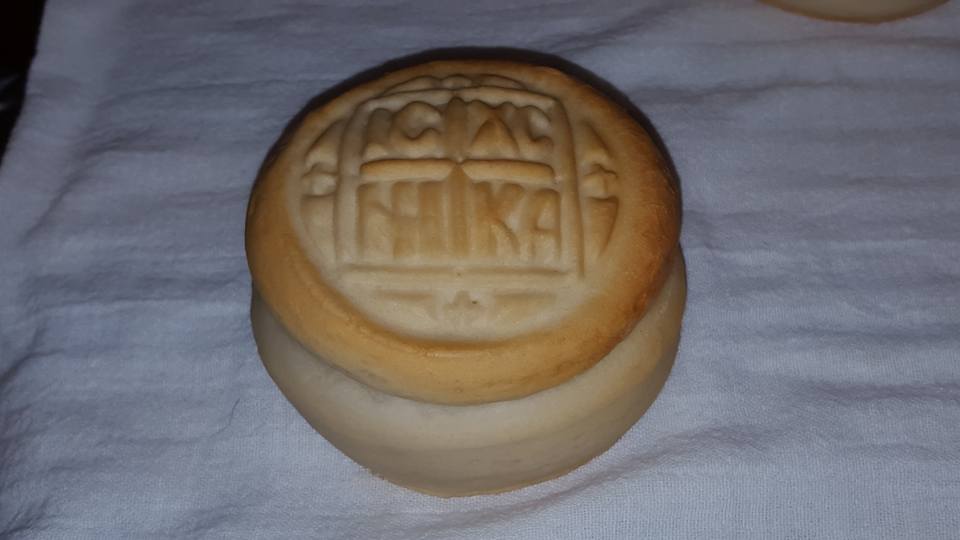
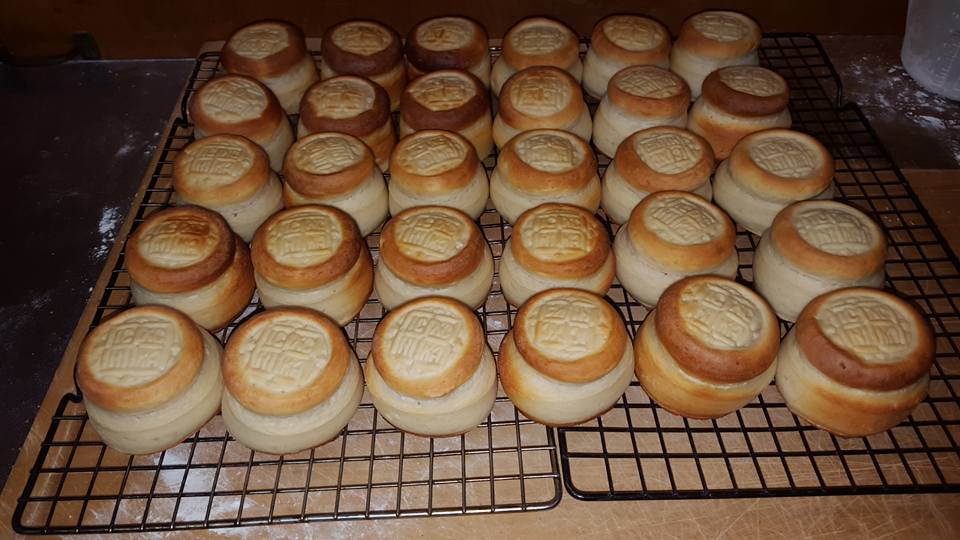
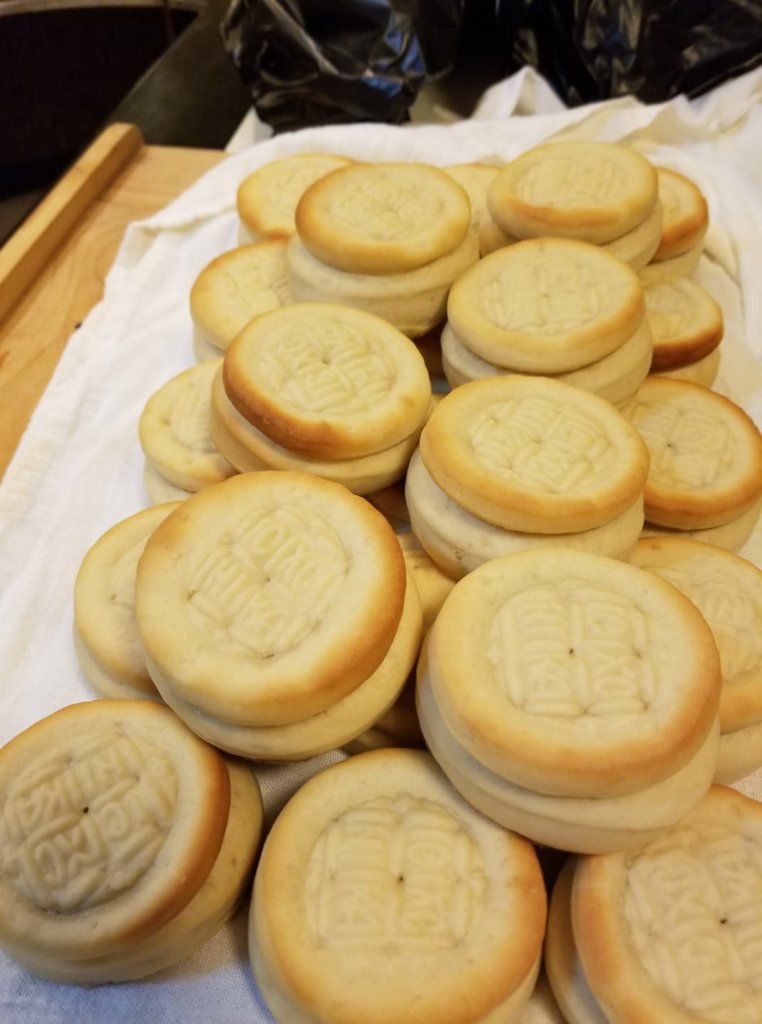
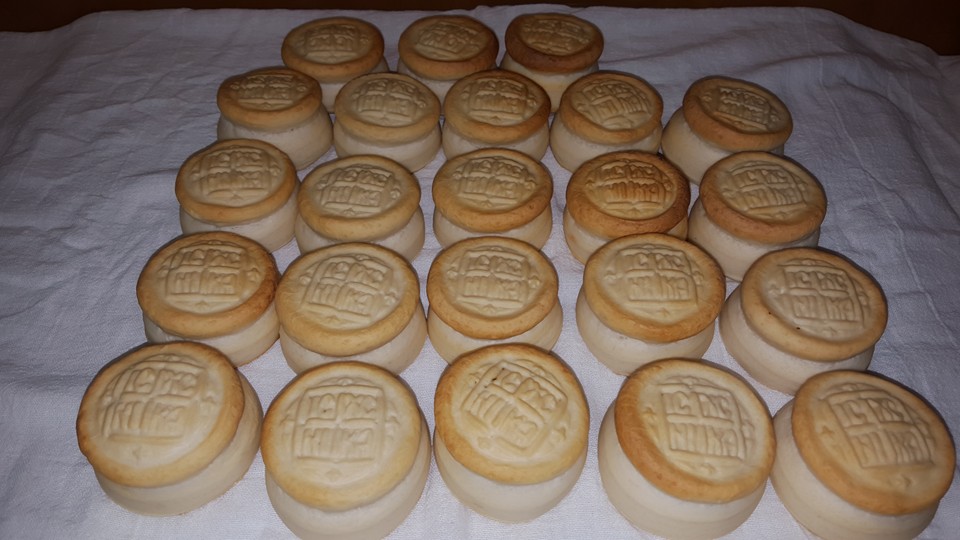
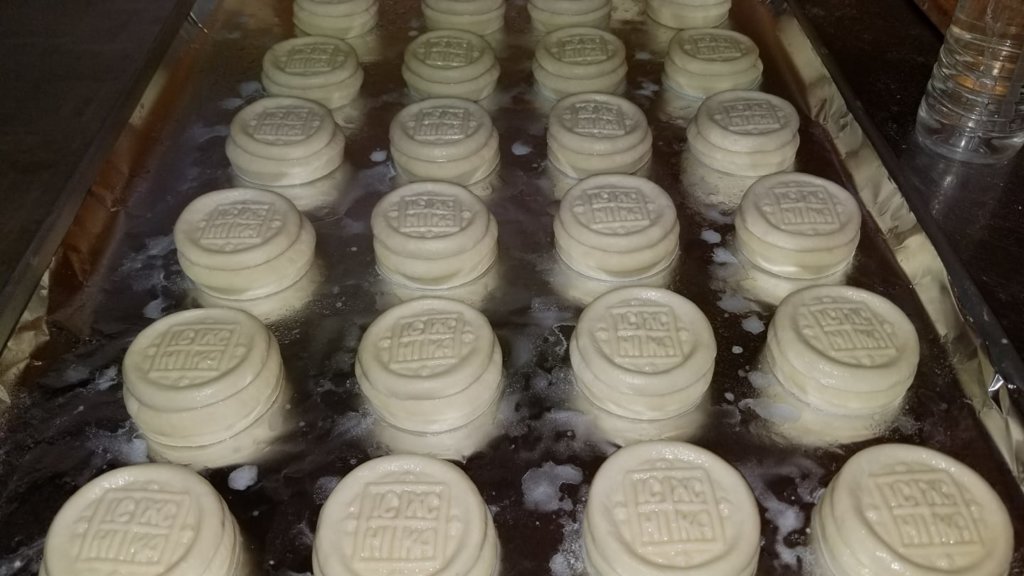
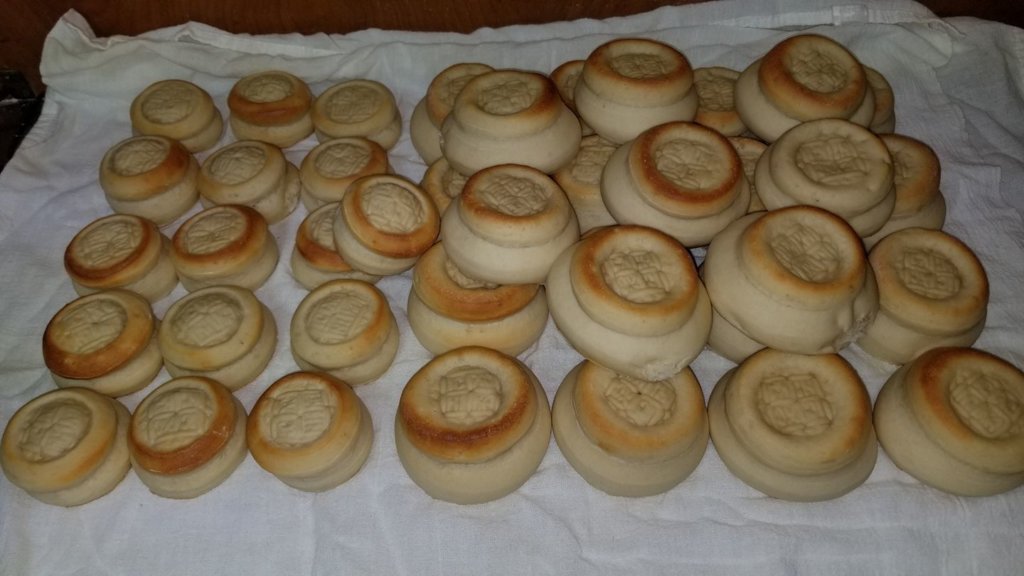
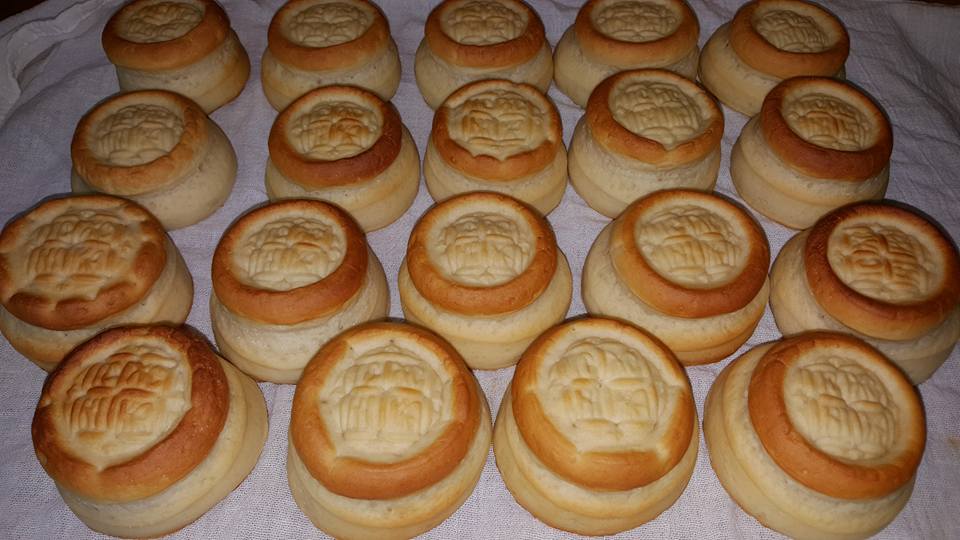
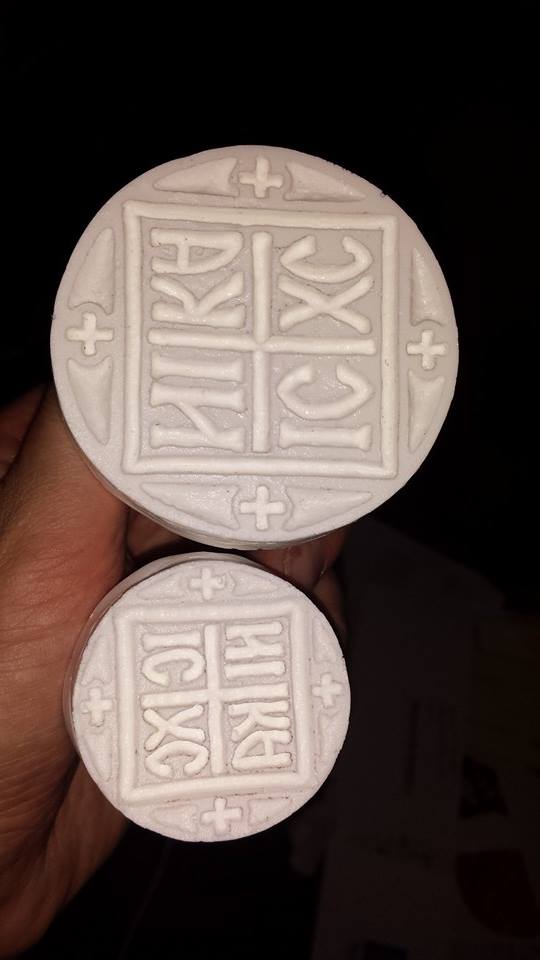
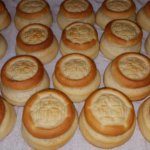
| Servings | Prep Time |
| 12-16 12-16 prosphora loaves (yield will greatly depend on the size of the prosphora seal) | 3 hours |
| Cook Time | Passive Time |
| 10 minutes | 2 hours |
|
|

|
Adapted by Fr. Vlad Zablotskyy
|
- 7-9 cups all purpose floour (or bread flower)
- 1 tsp dry active yeast
- 0.44 oz salt
- 2 cups water (lukewarm)
- Pray
- Dissolve the salt in the water, and add yeast. Let this mixture sit for 15 minutes to activate the yeast.
- Even if it seems like a lot, do not reduce the salt. The salt helps to slow down the fermentation process. (And note, despite how much salt this might seem, your final prosphora will actually taste somewhat sweet.)
- Combine flour and the yeast in the mixing bowl. If using a mixer, knead the dough for 20-30 minutes. If kneading by hand until the dough is elastic and silky.
- Out of the dough form a ball and let it rise at room temperature for 1 hour or until the dough doubled in size. Make sure the dough is covered to prevent a crust forming - plastic bag or plastic wrap will do the trick.
- Punch down and divide the dough into ⅔ and ⅓ parts. You will use the larger part for the bottoms of the prosphora while the smaller for the tops. Alternatively, you can just roll out your entire dough and after cutting out the bottoms, use whatever is left for the tops.
- After stamping the tops with the seal, place them on top of well wetted and already arranged on the baking sheet (you can use a spray bottle) bottoms.
- Once tops and bottoms are combined, let them rise for 35-40 minutes be before piercing each loaf five (or more) times and baking in 450°F oven. For about 12-18 minutes, checking on your prosphora every 4 minutes - piercing and pressing down loaves if needed (please see the notes regarding this). When your tops are light golden brown, your prosphora is done.
- NOTE ABOUT BAKING IN CONVECTION OVEN. Bake your posphora at 425°F.
- Pray
Your yield will greatly depend on the size of the prosphora seal. The bottoms should be cut slightly larger than the tops. The tops should either match exactly in diameter the prosphora seal or be by 1/8 of an inch larger than the seal itself.
You may think this recipe calls for too much salt, but don't worry, your final prosphora will actually taste somewhat sweet. The salt helps temper down the rising - for that to happen it is important to dissolve the salt in the water first.
Too often bakers put the prosphora right into the oven after joining tops and bottoms together. This will inadvertently result in prosphora that looks like crooked mushrooms. The reason to let it rest an additional 30-40 minutes before backing is that it will allow the dough to relax, and once pierced with the wholes, to let the access air out of the dough thus preventing an uneven oven rise.
During the baking process, it's ok to additionally pierce the loaves and to apply pressure to the tops of prosphora to allow access air to escape - be careful and be fast or you can burn your fingers.

Recent Comments